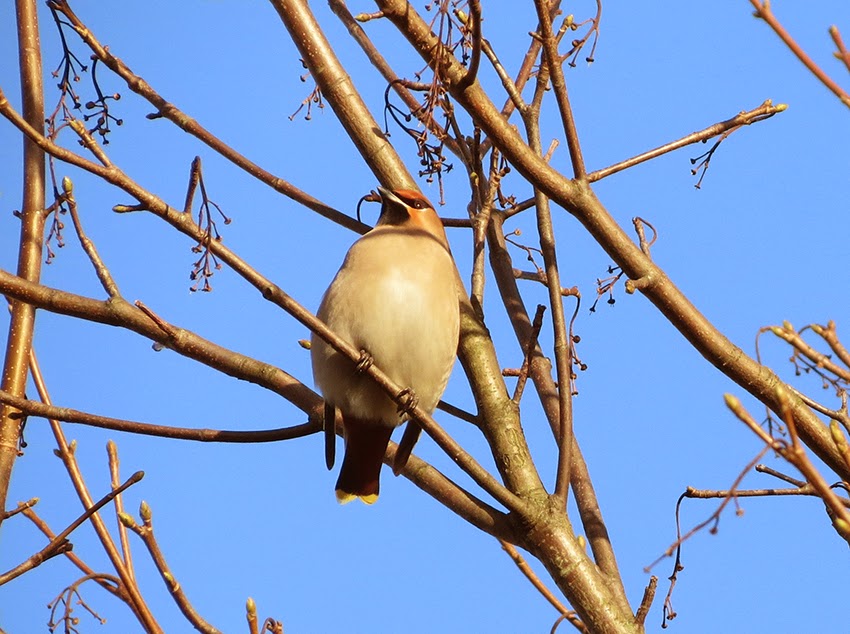Yellow-rumped Warbler, High Shincliffe, Durham - Tuesday 11th February 2014
This Yellow-rumped Warbler (Setophaga coronata), or more precisely the eastern form Mrytle Warbler (S. c. coronata), was found in High Shincliffe, Durham, during an RSPB Big Garden Birdwatch on the weekend of 25-26th January. As this species is normally confined to North America, it was understandable the finders didn't know what it was. The gave it the rather ace name of "Flora Butterbum", and had the wherewithal to send photos to the RSPB. Once they were told just how rare this birth was (only 30 accepted records in the British Isles at the time, and only half of those in the UK itself), the question turned to access for twitchers. This took some negotiating, but eventually access details were released on the 9th February. Read the finders account here.
I'd taken the Tuesday afternoon off work to go for this beauty, which was the first opportunity I had, and travelled up on the train. Not the first bird I've twitched by train (that was a Black-crowned Night-heron at Fairburn Ings some years ago), but undoubtedly the best. I also managed to tick this Bittern at York Station on the way up…
Bittern, York - Tuesday 11th February 2014
There were a few glum faces among the 20 or so twitchers as I arrived - the bird hadn't been seen for over 1.5 hours. I joined the search, scanning the trees opposite the "grassy knoll", and after five minutes I became aware of call, a soft repeated "chip" or "chirp". I couldn't pin-point it (my hearing is terrible), but fortunately another birder had better stereographic projection than the rest of us and he pointed at a sparrow-sized bird calling from the very top of the tree in front of us, "Is that it?". Bins out, scopes on… "Yes!"
Yellow-rumped Warbler, High Shincliffe, Durham - Tuesday 11th February 2014
It soon flew off, but came back to the trees several times during the two hours I was there, including a few long stints on the coconut feeders and the base of the trees. The video below illustrates the viewing conditions. The feeders had been provided in an attempt to lure the bird out of the finders' garden and allow birders decent views.
At first glance the plumage was relatively drab, but closer inspection revealed a really interesting bird. It was large for what we call a warbler. The uppers were grey-brown with, according to my notes, a suggestion of rufous tones in some lights. The back was clearly streaked, as were the flanks and breast. The underparts were a grey-white. It had large white eye-rings and a hint of pale supercillium. There was a bright lemon-yellow patch on each flank and a clear yellow patch on the rump. This last feature wasn't always visible, but really shone when on view. I think the consensus was this was a first-winter male.
There were three Waxwing around 200 metres further along the road from the feeders. The sun was out now and I managed some better shots than I did of the Myrtle Warbler…
Waxwing, High Shincliffe, Durham - Tuesday 11th February 2014
The Myrtle Warbler wasn't so easy to photograph, especially as it spent most of its time on feeders partially obscured by tall dry grass. The auto-focus on my camera couldn't cope, but I resisted the temptation to get too close ...unlike some.
Just a little closer...














No comments:
Post a Comment